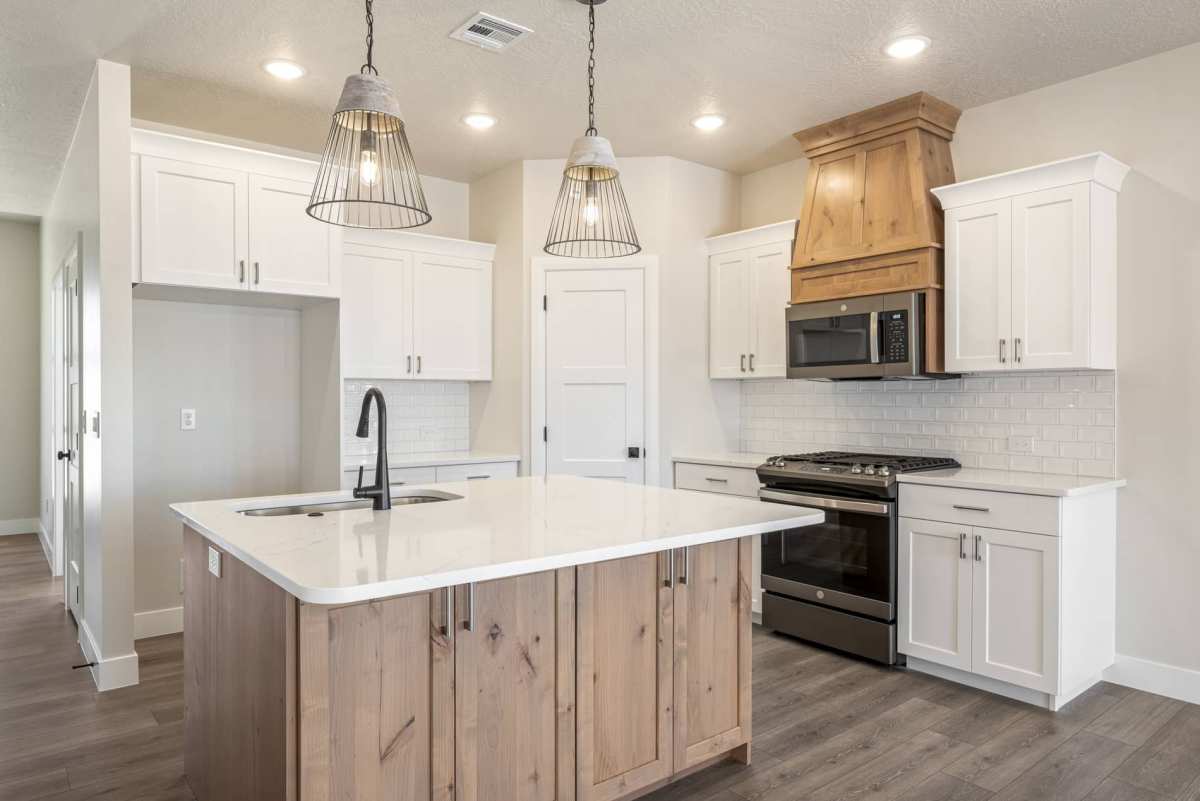A well-organized kitchen is the heart of an efficient home, and with the holidays right around the corner, many homeowners are entering a season where a great deal of time is spent in the kitchen. Here’s a step-by-step guide to help you organize your kitchen for maximum efficiency.
1. Start with a Clean Slate
Before diving into organizing, give your kitchen a thorough cleaning. Empty your cabinets, drawers, and pantry, and wipe down all surfaces. This not only gives you a fresh start but also helps you identify what you have, what you need, and what can be discarded or donated.
2. Declutter and Purge
Go through all your kitchen items and assess what you actually use. Keep only what you regularly need and love, and get rid of duplicate items, old gadgets, or anything that’s broken. If you haven’t used something in the past year, it’s probably time to let it go.
3. Group Similar Items Together
Categorizing your kitchen items is essential for efficiency. Group similar items together, such as baking supplies, cooking utensils, pots and pans, and food storage containers. This makes it easier to find what you need and ensures that everything has a designated spot.
- Cooking Essentials: Keep items you use frequently, like oils, spices, and utensils, near the stove for easy access.
- Baking Supplies: Store baking essentials like flour, sugar, and baking powder together, preferably in airtight containers.
- Small Appliances: Group small appliances like blenders, toasters, and food processors in one area, ideally in a lower cabinet for easy access.
4. Maximize Cabinet and Drawer Space
Use organizers to make the most of your cabinet and drawer space. Here are a few ideas:
- Drawer Dividers: Use dividers to keep utensils, knives, and other small items organized and easy to find.
- Pull-Out Shelves: Install pull-out shelves in your lower cabinets to make accessing pots, pans, and other heavy items easier.
- Vertical Storage: Store baking sheets, cutting boards, and trays vertically in a cabinet to save space and keep them easily accessible.
- Lazy Susans: Place a Lazy Susan in a corner cabinet or pantry to make it easier to reach items in the back.
5. Optimize Your Pantry
An organized pantry is key to a functional kitchen. Here’s how to keep it tidy:
- Clear Containers: Use clear containers for storing dry goods like pasta, rice, and cereals. This not only keeps your pantry looking neat but also allows you to see what you have at a glance.
- Labels: Label your containers and shelves to make it easier to find what you need and to maintain the organization over time.
- Zones: Create zones in your pantry for different types of food, such as snacks, canned goods, and breakfast items. This makes meal prep quicker and more efficient.
- First-In, First-Out System: Arrange your pantry items by expiration date, with the oldest items at the front, to ensure nothing goes to waste.
6. Create a Functional Workflow
The layout of your kitchen plays a significant role in its efficiency. Consider the “kitchen triangle” principle, which refers to the ideal distance between your stove, sink, and refrigerator. These three points should form a triangle to minimize the steps you take while cooking.
- Prep Zone: Designate a space near the sink and trash can for food prep, with cutting boards, knives, and bowls within reach.
- Cooking Zone: Keep pots, pans, and cooking utensils near the stove. Store spices and oils in a nearby drawer or cabinet.
- Cleaning Zone: Organize your cleaning supplies under the sink, and keep dishwashing tools within easy reach.
7. Keep Counters Clutter-Free
Clear counters are essential for an efficient kitchen. Only keep items you use daily on the countertop, such as a coffee maker or toaster. Store everything else in cabinets or drawers to free up workspace.
8. Regular Maintenance
The key to maintaining an organized kitchen is regular upkeep. Set aside time every few months to reassess your kitchen’s organization, declutter, and make any necessary adjustments. This will help you stay on top of things and ensure your kitchen remains efficient over time.
9. Personalize Your Space
Finally, make sure your kitchen reflects your personal style and needs. Add personal touches like artwork, plants, or other decor to make your kitchen a place you enjoy spending time in. The more you love your space, the more likely you are to keep it organized.
By following these steps, you’ll create a kitchen that’s not only functional but also a joy to cook and spend time in. Remember, an organized kitchen is a key ingredient in efficient meal preparation, reducing stress, and making your time in the kitchen more enjoyable. Happy organizing!



